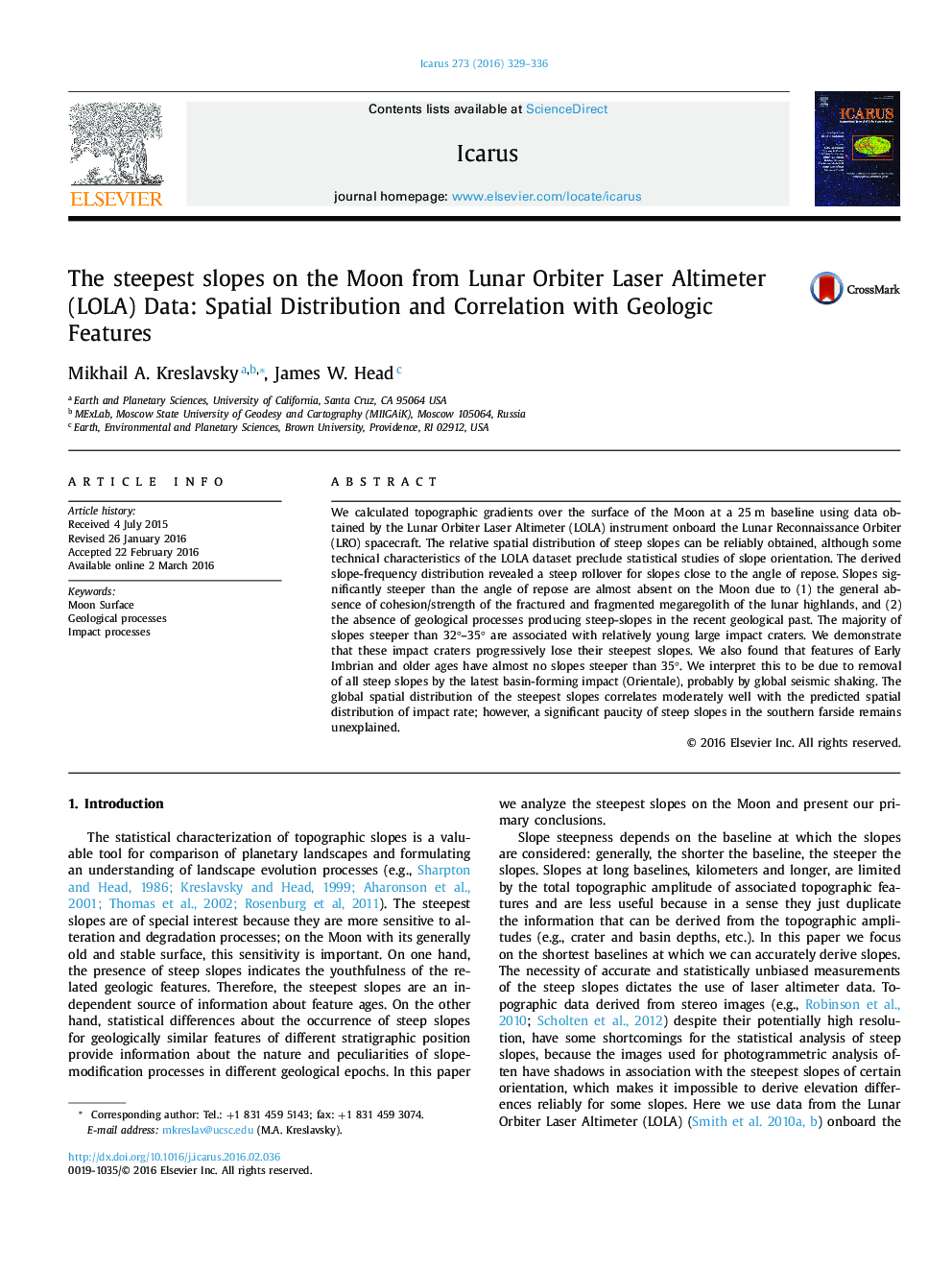| Article ID | Journal | Published Year | Pages | File Type |
|---|---|---|---|---|
| 8135186 | Icarus | 2016 | 8 Pages |
Abstract
We calculated topographic gradients over the surface of the Moon at a 25 m baseline using data obtained by the Lunar Orbiter Laser Altimeter (LOLA) instrument onboard the Lunar Reconnaissance Orbiter (LRO) spacecraft. The relative spatial distribution of steep slopes can be reliably obtained, although some technical characteristics of the LOLA dataset preclude statistical studies of slope orientation. The derived slope-frequency distribution revealed a steep rollover for slopes close to the angle of repose. Slopes significantly steeper than the angle of repose are almost absent on the Moon due to (1) the general absence of cohesion/strength of the fractured and fragmented megaregolith of the lunar highlands, and (2) the absence of geological processes producing steep-slopes in the recent geological past. The majority of slopes steeper than 32°-35° are associated with relatively young large impact craters. We demonstrate that these impact craters progressively lose their steepest slopes. We also found that features of Early Imbrian and older ages have almost no slopes steeper than 35°. We interpret this to be due to removal of all steep slopes by the latest basin-forming impact (Orientale), probably by global seismic shaking. The global spatial distribution of the steepest slopes correlates moderately well with the predicted spatial distribution of impact rate; however, a significant paucity of steep slopes in the southern farside remains unexplained.
Related Topics
Physical Sciences and Engineering
Earth and Planetary Sciences
Space and Planetary Science
Authors
Mikhail A. Kreslavsky, James W. Head,
